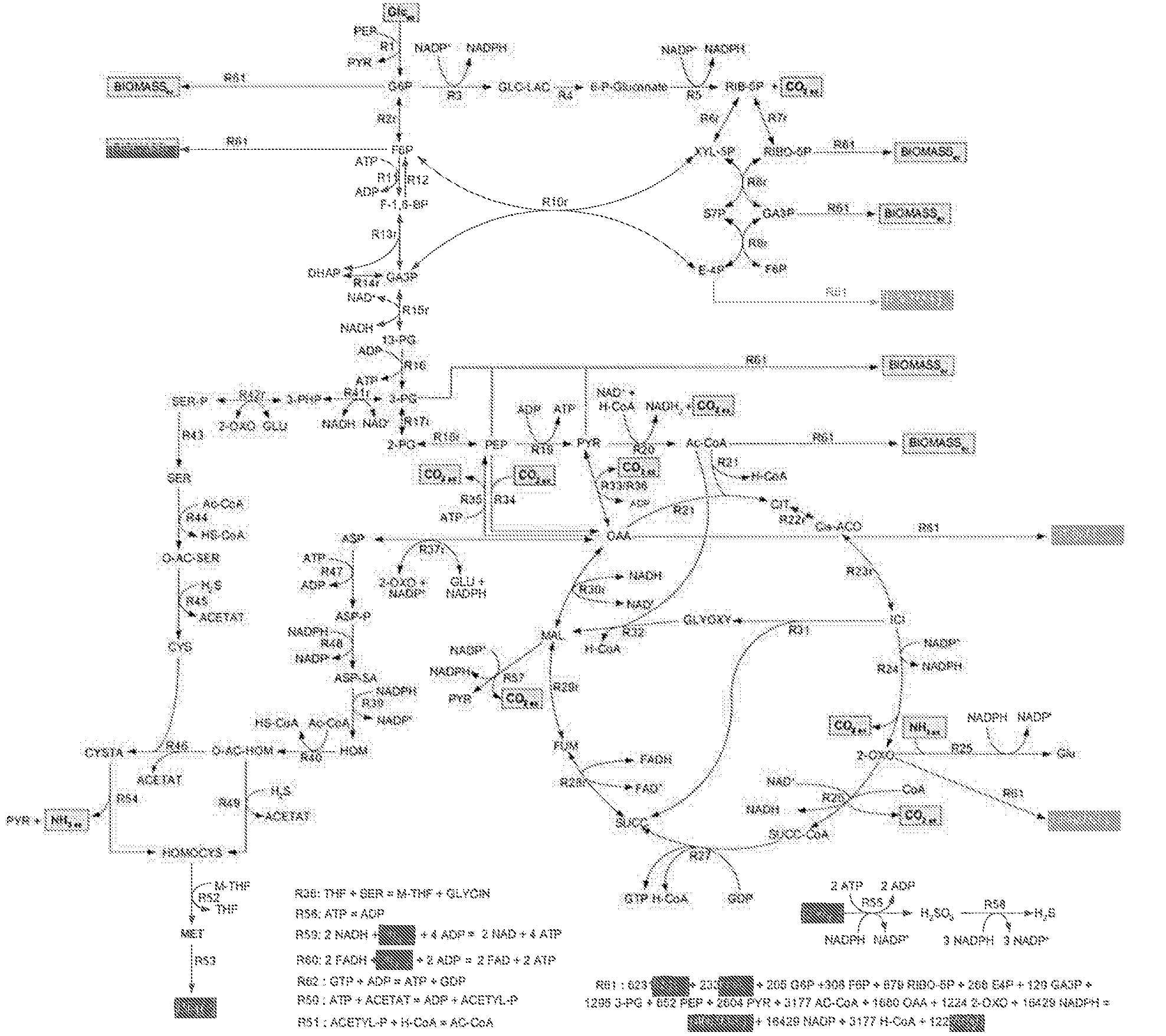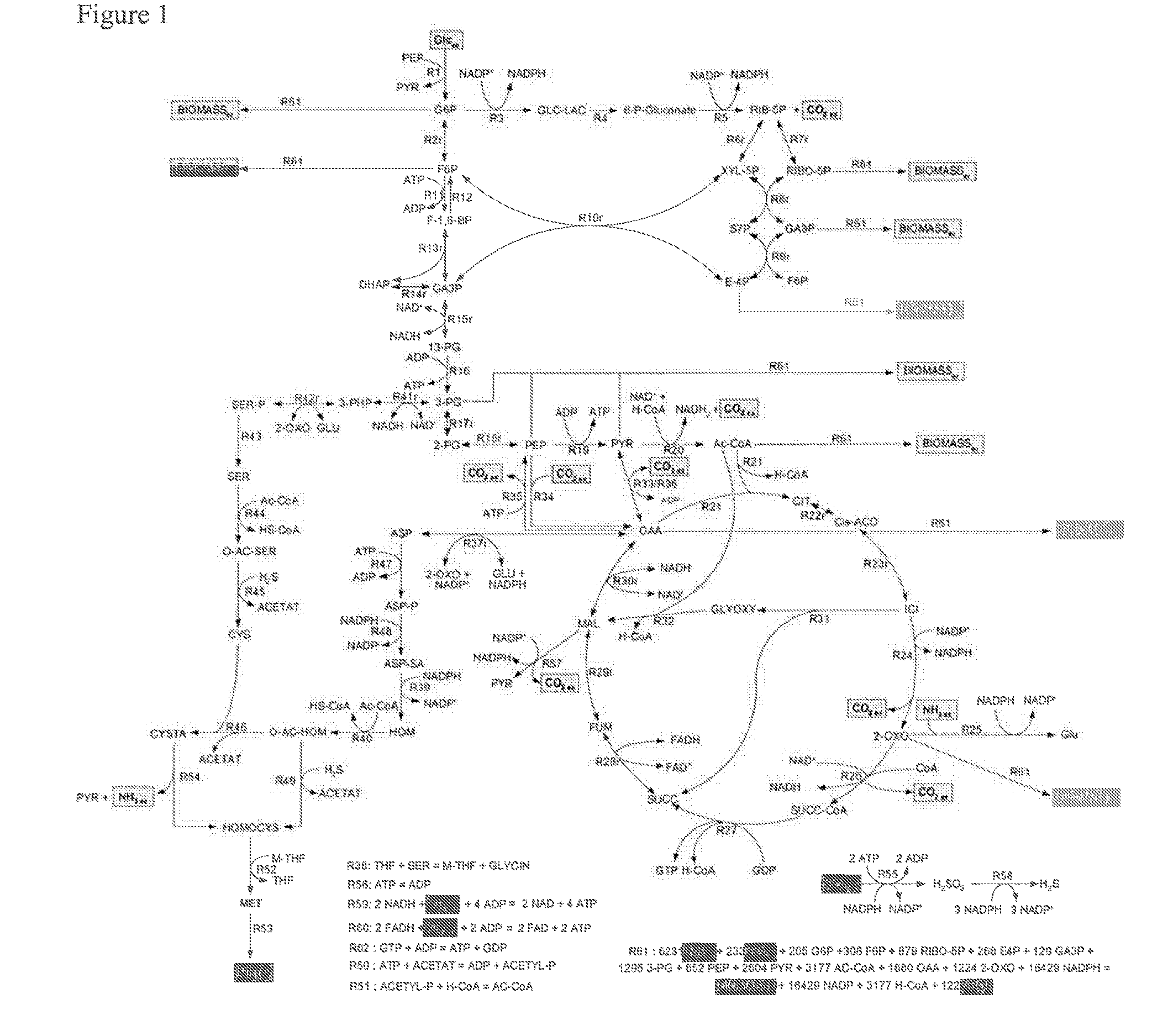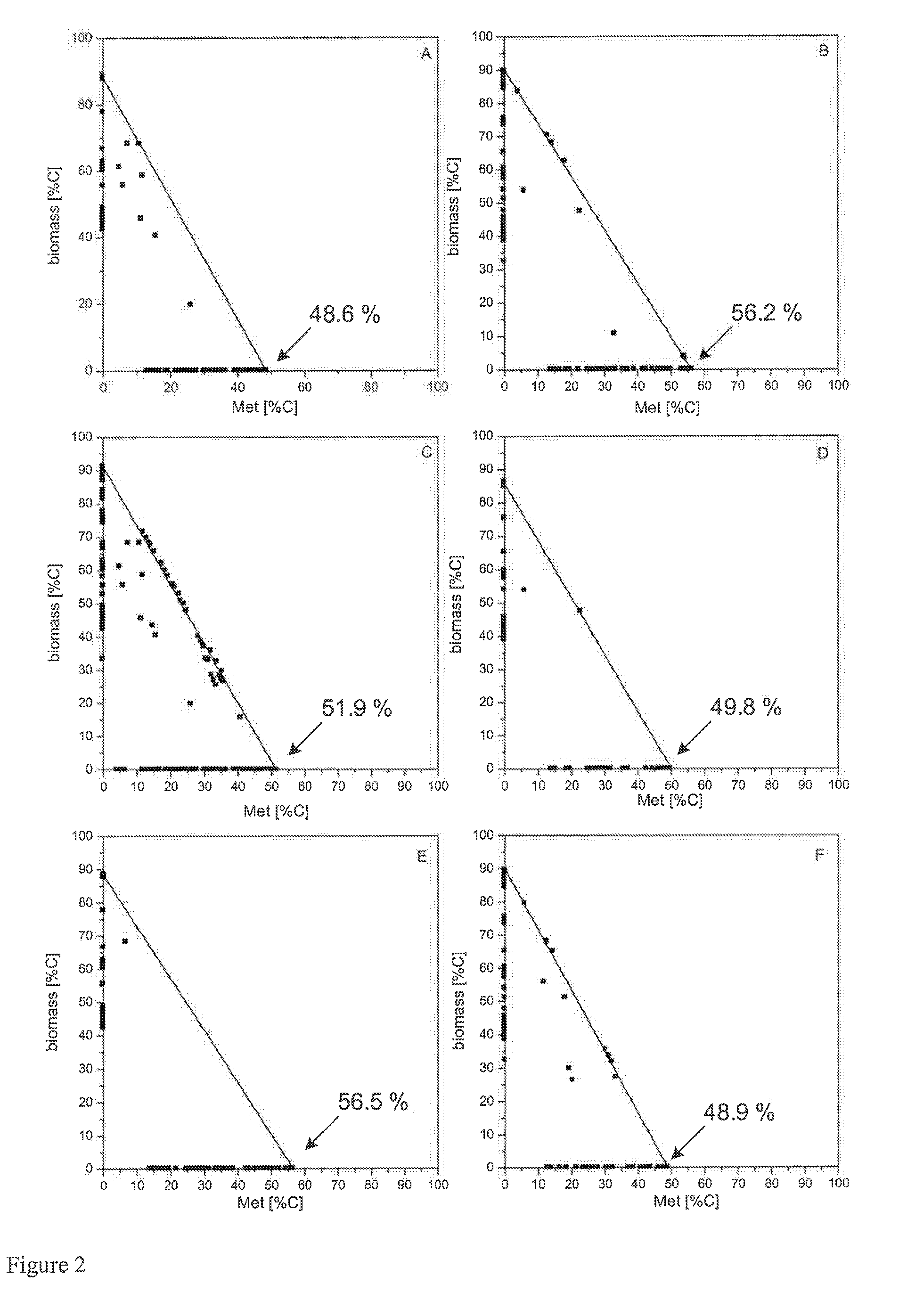Microorganisms With Increased Efficiency for Methionine Synthesis
- Summary
- Abstract
- Description
- Claims
- Application Information
AI Technical Summary
Benefits of technology
Problems solved by technology
Method used
Image
Examples
example 1
Generation of the Methionine Producing Starting Strain M2014 Strain
[0929]C. glutamicum strain ATCC 13032 was transformed with DNA A (also referred to as pH273) (SEQ ID NO: 1) and “Campbelled in” to yield a “Campbell in” strain. FIG. 6 shows a schematic of plasmid pH273. The “Campbell in” strain was then “Campbelled out” to yield a “Campbell out” strain, M440, which contains a gene encoding a feedback resistant homoserine dehydrogenase enzyme (homfbr). The resultant homoserine dehydrogenase protein included an amino acid change where S393 was changed to F393 (referred to as Hsdh S393F).
[0930]The strain M440 was subsequently transformed with DNA B (also referred to as pH373) (SEQ ID NO:2) to yield a “Campbell in” strain. FIG. 6 depicts a schematic of plasmid pH373. The “Campbell in” strain was then “Campbelled out” to yield a “Campbell out” strain, M603, which contains a gene encoding a feedback resistant aspartate kinase enzyme (Askfbr) (encoded by lysC). In the resulting aspartate k...
example 2
Shake Flask Experiments and HPLC Assay
[0941]Shake flasks experiments, with the standard Molasses Medium, were performed with strains in duplicate or quadruplicate. Molasses Medium contained in one liter of medium: 40 g glucose; 60 g molasses; 20 g (NH4)2 SO4; 0.4 g MgSO4.7H2O; 0.6 g KH2PO4; 10 g yeast extract (DIFCO); 5 ml of 400 mM threonine; 2 mgFeSO4.7H2O; 2 mg of MnSO4.H2O; and 50 g CaCO3 (Riedel-de Haen), with the volume made up with ddH2O. The pH was adjusted to 7.8 with 20% NH4OH, 20 ml of continuously stirred medium (in order to keep CaCO3 suspended) was added to 250 ml baffled Bellco shake flasks and the flasks were autoclaved for 20 min. Subsequent to autoclaving, 4 ml of “4B solution” was added per liter of the base medium (or 80 μl / flask). The “4B solution” contained per liter: 0.25 g of thiamine hydrochloride (vitamin B1), 50 mg of cyanocobalamin (vitamin B12), 25 mg biotin, 1.25 g pyridoxine hydrochloride (vitamin B6) and was buffered with 12.5 mM KPO4, pH 7.0 to disso...
example 3
Generation of a Microorganism Containing a Deregulated Sulfate Reduction Pathway
[0943]Plasmid pOM423 (SEQ ID NO: 7) was used to generate strains that contain a deregulated sulfate reduction pathway. Specifically, an E. coli phage lambda PL and PR divergent promoter construct was used to replace the native sulfate reduction regulon divergent promoters. Strain M2014 was transformed with pOM423 and selected for kanamycin resistance (Campbell in). Following sacB counter-selection, kanamycin sensitive derivatives were isolated from the transformants (Campbell out). These were subsequently analyzed by PCR to determine the promoter structures of the sulfate reduction regulon. Isolates containing the PL-PR divergent promoters were named OM429. Four isolates of OM429 were assayed for sulfate reduction using the DTNB strip test and for methionine production in shake flask assays. To estimate relative sulfide production using the DTNB strip test, a strip of filter paper was soaked in a solutio...
PUM
| Property | Measurement | Unit |
|---|---|---|
| Fraction | aaaaa | aaaaa |
| Fraction | aaaaa | aaaaa |
| Fraction | aaaaa | aaaaa |
Abstract
Description
Claims
Application Information
 Login to View More
Login to View More - Generate Ideas
- Intellectual Property
- Life Sciences
- Materials
- Tech Scout
- Unparalleled Data Quality
- Higher Quality Content
- 60% Fewer Hallucinations
Browse by: Latest US Patents, China's latest patents, Technical Efficacy Thesaurus, Application Domain, Technology Topic, Popular Technical Reports.
© 2025 PatSnap. All rights reserved.Legal|Privacy policy|Modern Slavery Act Transparency Statement|Sitemap|About US| Contact US: help@patsnap.com



